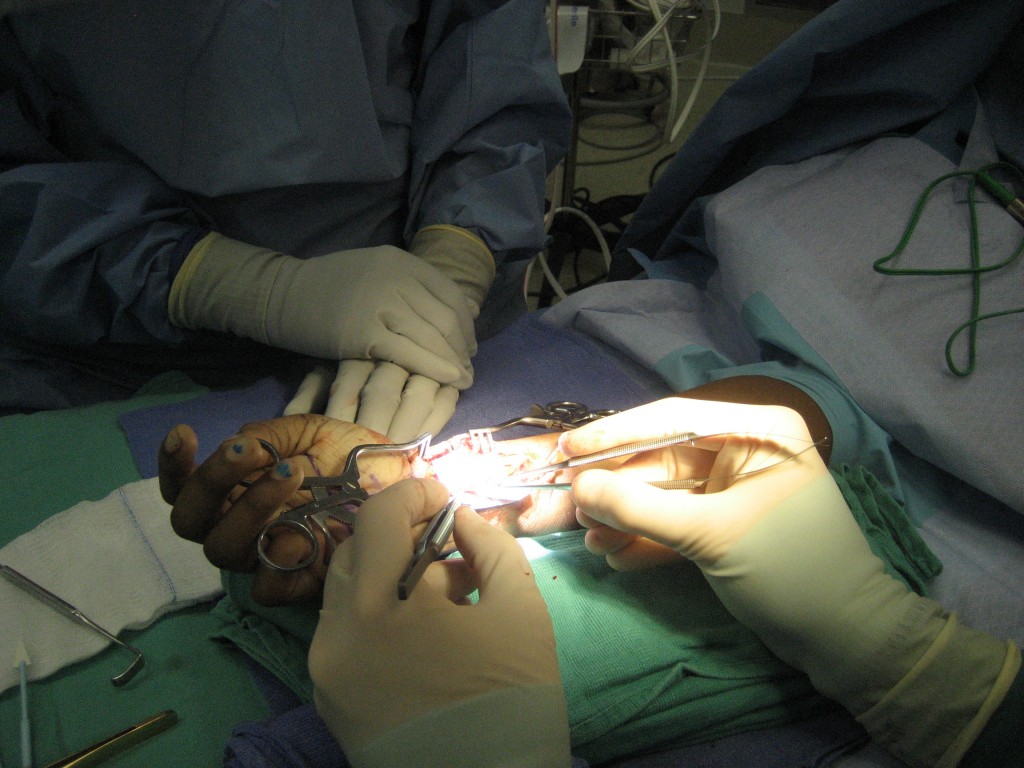Nerves are fragile and can be injured in many ways — including compression, lacerations, or blunt trauma. Compression is caused by prolonged pressure on a nerve, such as in carpal tunnel syndrome. Nerve lacerations are caused by a sharp object such as a knife or broken glass. A cut nerve in the finger will make it feel constantly numb often with tingling and electric pain. A nerve can also be injured by a sudden blunt force or “contusion” such as the thumb being hit with a hammer.
Treatment of a nerve injury depends on the type of injury, timing of the injury, and specific nerve involved. Nerves which are contused due to blunt trauma will often recover function gradually on their own, if the nerve injury is not too severe.
Surgery is recommended for most cut nerves in the hand in order to improve function and decrease the change for neuroma formation. Without surgery, the two ends of the nerve have difficulty joining together and the numbness can be permanent. A neuroma is a thickened end of a cut nerve which can be hypersensitive to the touch.
During nerve repair surgery, the nerve ends are brought back together and the nerve sheath is repaired using fine sutures. This is known as a “primary repair.” Magnification improves the ability to see the nerve and its tiny internal bundles called fascicles. Injured tendons are also repaired if needed. This surgery is ideally performed within a few days of the injury.
If there has been a delay in treatment or if the nerve has been injured over a wide area, it may not be possible to bring the ends of the nerve back together. In this case a “nerve graft” can be used for nerve reconstruction to bridge the gap. There are many available sources for nerve graft reconstruction. The three most common ways to bridge the gap are:
- Autografts: An autograft is a nerve graft obtained from the same patient’s body using another skin incision. Some numbness can be expected from the donor site, depending on the location of the graft.
- Allografts: An allograft is a nerve obtained from a person who has donated their body tissues. The grafts are cleaned and prepared carefully for this purpose. There is a very small risk of both disease transmission and graft rejection with use of allografts, but they do not require a second incision on the patient. These are commonly used today.
- Synthetic tubes: Synthetic hollow tubes are designed to guide the reconnection of nerve gaps. They do not require nerve harvesting from the patient but there is a small risk of graft rejection with any manufactured material.
Nerve repair surgery is not a “quick fix.” Recovery of the nerve is slow and can take 12 months or more. Recovery time varies among patients, depending on the severity of the injury, patient age, possible complications, and medical history of the patient. Not all patients regain full function after a nerve repair or reconstruction.

